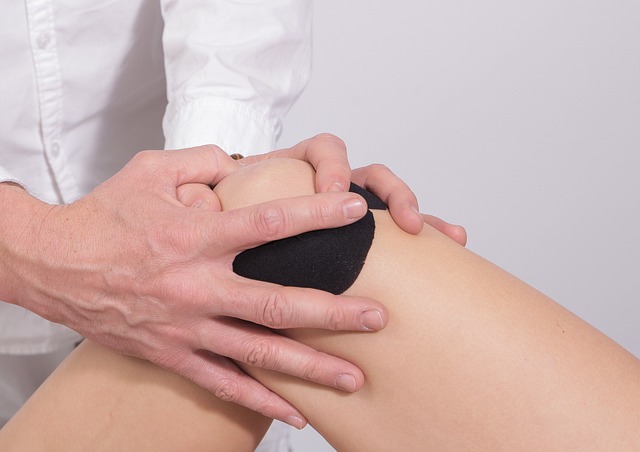Hi there fellow hikers! Lace up your boots and get ready for an adventure as I dive into the world of hiker’s knee. As an avid hiker myself, I understand the joys and challenges that come with exploring nature’s wonders. Unfortunately, knee issues can sometimes put a damper on our hiking ambitions. But fear not! In this post, I’ll unravel the mysteries of a hiker’s knee, discussing its causes, symptoms, and most importantly, the best knee braces to support you on the trails. So, let’s hit the trail and get started on this informative journey together!
Understanding Hiker’s Knee:
What is Hiker’s Knee? When I talk about a hiker’s knee, I’m referring to a condition known as patellofemoral pain syndrome (PFPS). It’s a common knee problem that often affects hikers and runners, earning it the nickname “runner’s knee.” Essentially, it’s an overuse injury that involves the kneecap (patella) and the surrounding structures.
Causes of Hiker’s Knee
- Repetitive stress on the knee joint: Hiking involves repetitive movements, especially when going downhill or on uneven terrain. This repetitive stress can strain the knee joint, leading to pain and discomfort.
- Improper hiking techniques or body mechanics: The way you hike can greatly impact your knees. Poor forms, such as landing heavily on the knees or overstriding, can increase the stress on the kneecap and its surrounding tissues.
- Overuse and excessive strain: Hiking long distances or engaging in intense hikes without allowing proper rest and recovery time can put excessive strain on the knees, leading to inflammation and pain.
- Muscular imbalances and weaknesses: Weaknesses in the muscles that support the knees, such as the quadriceps and hip muscles, can disrupt the proper alignment of the kneecap, contributing to the hiker’s knee.
Now that you have a better understanding of what a hiker’s knee is and what causes it, let’s explore the common symptoms you might experience if you’re dealing with this condition.
Recognizing the Symptoms
Embarking on an exciting hiking adventure only to be halted by knee pain? Don’t fret! Learn to decipher the telltale signs of a hiker’s knee in this section, empowering you to identify and address the symptoms, ensuring your trails remain pain-free and your adventures unforgettable.
Common Symptoms of Hiker’s Knee
- Dull or sharp pain around the kneecap: Hiker’s knee typically presents as aching or sharp pain around the front of the knee or under the kneecap. This pain may worsen with activities that involve bending the knee, such as hiking downhill or going downstairs.
- Swelling and inflammation: You might notice swelling or inflammation around the knee area, which can make the knee feel warm to the touch.
- Tenderness and discomfort while hiking downhill or descending stairs: The hiker’s knee pain tends to be more prominent when you’re going downhill or descending stairs. The impact and stress on the knee joint can exacerbate the discomfort.
- Clicking or popping sounds in the knee: Some individuals with hiker’s knee may experience clicking or popping sounds when they bend or straighten their knee. These sounds can be accompanied by a feeling of the knee “catching” or “locking.”
- Stiffness and limited range of motion: Hiker’s knee can cause stiffness in the knee joint, making it challenging to fully bend or straighten the knee. This limited range of motion can hinder your hiking abilities.
Remember, everyone’s experience with a hiker’s knee can vary. If you’re experiencing any of these symptoms, it’s essential to take them seriously and seek appropriate measures to address the issue. In the next section, I’ll explore preventive measures that can help you avoid hiker’s knee in the first place.
Preventive Measures for Hiker’s Knee:
Prevention is the key to uninterrupted hiking bliss! Don’t let a hiker’s knee dampen your outdoor pursuits. In this section, I unveil a treasure trove of preventive measures to shield your knees from pain and injury. From mastering proper hiking techniques to strengthening exercises, gear up with our invaluable tips and safeguard your knees for countless breathtaking adventures ahead. Get ready to conquer the trails with confidence and keep the hiker’s knee at bay.
Proper Hiking Techniques:
- Maintaining an appropriate pace and rhythm: Avoid overexerting yourself by maintaining a steady pace that suits your fitness level. Pushing too hard can increase the stress on your knees.
- Using trekking poles for stability and weight distribution: Trekking poles can help alleviate some of the strain on your knees by providing extra support and stability. They also assist in weight distribution, reducing the impact on your knees while hiking downhill.
- Choosing the right footwear and using custom orthotics, if needed: Invest in hiking shoes or boots that provide proper arch support and cushioning. If you have specific foot or knee conditions, consider using custom orthotics prescribed by a healthcare professional to enhance support and alignment.
Strengthening Exercises and Stretches:
- Targeting quadriceps, hamstrings, and hip muscles: Strengthening the muscles around your knees can help improve their stability and support. Focus on exercises that target the quadriceps, hamstrings, and hip muscles, such as squats, lunges, and hip abduction exercises.
- Demonstrating specific exercises and stretches with proper form: Seek guidance from a certified fitness professional or physical therapist to learn exercises and stretches tailored to your needs. They can ensure you perform them with the correct form, maximizing their effectiveness and minimizing the risk of injury.
Gradual Progression and Rest:
- Avoiding sudden increases in intensity or duration: Gradually increase the intensity and duration of your hikes to allow your body, including your knees, to adapt and strengthen over time. Sudden spikes in activity can place excessive strain on your knees and lead to injuries like a hiker’s knee.
- Allowing ample rest and recovery time: Rest days are just as important as active hiking days. Give your body sufficient time to rest and recover between hikes to allow your knees to heal and rejuvenate.
By incorporating these preventive measures into your hiking routine, you can significantly reduce the risk of developing a hiker’s knee. However, if you still experience knee pain or discomfort, even with preventive measures in place, in the next section I will introduce you to the best knee braces for hiking that can provide additional support and relief.
The Best Knee Braces for Hiking
Discover the crème de la crème of knee braces that provide unparalleled stability, comfort, and protection. Whether you seek mild support or maximum reinforcement, our curated selection will elevate your hiking experience to new heights. Get ready to conquer the trails with confidence and bid farewell to hiker’s knee woes once and for all!
Understanding Knee Braces:
- Different types of knee braces and their functions: Knee braces come in various types, including knee sleeves, wraparound braces, and hinged braces. Knee sleeves provide compression and mild support, while wraparound braces offer adjustable compression and stability. Hinged braces provide the highest level of support and stability with built-in hinges.
- The benefits of knee braces for hikers: Knee braces can provide additional support, stability, and compression to the knee joint, helping alleviate pain and reducing the risk of further injury. They can also improve proprioception, which is the body’s awareness of joint position, aiding in better movement control while hiking.
Factors to Consider When Choosing a Knee Brace:
- Level of support and stability required: Assess the severity of your knee condition and choose a knee brace that offers an appropriate level of support and stability. Mild cases may only require a knee sleeve, while more significant issues might benefit from a hinged brace.
- Comfort and breathability: Look for knee braces made from breathable materials that wick away moisture and provide comfort during long hikes. Adjustable straps or closures can help achieve a snug fit without causing discomfort.
- Adjustability and sizing options: Ensure the knee brace you choose offers adjustable features to customize the fit to your knee’s specific dimensions. Proper sizing is crucial for optimal support and effectiveness.
- Durability and ease of maintenance: Consider the durability of the knee brace, especially if you plan on embarking on challenging hikes. Additionally, check if it’s easy to clean and maintain, as hiking can expose the brace to dirt, sweat, and outdoor elements.
Recommended Knee Braces for Hiking:
- Knee brace A: Features: This knee brace offers adjustable compression and support with a wraparound design and adjustable straps. It is made from breathable and moisture-wicking materials. Benefits: It provides mild to moderate support, making it suitable for hikers with mild knee issues or those looking for preventive support.
- Knee brace B: Features: This hinged knee brace offers maximum support and stability with its hinged design. It is constructed from durable materials and has adjustable straps for a customizable fit. Benefits: It provides excellent stability and is ideal for hikers with more severe knee conditions or those recovering from injuries.
- Knee brace C: Features: This knee sleeve offers compression and support with a lightweight and breathable design. It is made from moisture-wicking materials and has a contoured fit. Benefits: It provides moderate compression and support, making it a versatile option for hikers with mild to moderate knee discomfort.
Remember, the choice of knee brace depends on your specific needs and the advice of a healthcare professional. It’s always a good idea to consult with a medical expert or a physical therapist to determine the most suitable knee brace for your condition. With the right knee brace, you can enhance your hiking experience and minimize the risk of hiker’s knee-related issues.
Additional Tips for Hiker’s Knee:
Unlock the hidden secrets to conquer hiker’s knee with our arsenal of additional tips. From the soothing RICE method for immediate relief to knowing when to seek professional help, this section unveils the final puzzle pieces to ensure your knee health remains steadfast. Take your hiking prowess to the next level as I unveil insider advice and strategies to overcome hiker’s knee. Get ready to reclaim the trails, armed with knowledge and a renewed sense of confidence. Say goodbye to knee troubles and hello to limitless adventures!
RICE Method for Immediate Relief:
- Rest: If you experience pain or discomfort during or after hiking, give your knees a break and allow them to rest. Avoid activities that aggravate the pain and opt for low-impact exercises like swimming or cycling instead.
- Ice: Applying ice to the affected knee can help reduce swelling and inflammation. Use an ice pack or a bag of frozen peas wrapped in a thin towel and apply it to the knee for 15-20 minutes at a time, several times a day.
- Compression: Consider using a compression bandage or wrap around the knee to provide gentle support and help reduce swelling. Make sure it is snug but not too tight to avoid restricting blood circulation.
- Elevation: Elevating your leg can assist in reducing swelling. Prop up your leg on a pillow or cushion, keeping it slightly elevated above the level of your heart whenever possible.
Seeking Professional Help:
- When to consult a healthcare professional: If your knee pain persists, worsens, or significantly impacts your ability to hike or perform daily activities, it’s essential to seek professional advice. A healthcare professional, such as a sports medicine physician or a physical therapist, can provide a proper diagnosis and recommend appropriate treatment options.
- Physical therapy and other treatment options: Physical therapy can be highly beneficial for a hiker’s knee. A physical therapist can guide you through exercises to strengthen the muscles around your knee, improve your biomechanics, and address any muscular imbalances. They may also recommend other treatments such as ultrasound therapy, taping techniques, or orthotic interventions.
Remember, while these tips can provide relief and support, they are not a substitute for professional medical advice. If you’re experiencing persistent or severe knee pain, it’s crucial to consult with a healthcare professional who can evaluate your condition and provide personalized guidance.
Conclusion
In conclusion, fellow hikers, I’ve journeyed through the realm of hiker’s knee, understanding its causes, recognizing its symptoms, and exploring preventive measures to keep our knees strong and pain-free. I’ve also discovered the best knee braces for hiking, which can provide that extra support and stability on the trails.
Remember, a hiker’s knee is not a hurdle that should stop us from enjoying the great outdoors. By implementing proper hiking techniques, strengthening exercises, and utilizing the right knee brace, you can minimize the risk and keep your knees happy and healthy.
If you do experience knee pain or discomfort, don’t hesitate to employ the RICE method for immediate relief and seek professional help if needed. Consulting a healthcare professional or physical therapist can provide valuable insights and guidance tailored to your specific situation.
As I wrap up this adventure, I want to encourage you to take care of your knees, for they are your steadfast companions on every hiking journey. Prioritize proper form, listen to your body, and be proactive in your knee care. Let’s keep exploring, breathing in the fresh air, and marveling at the wonders of nature without the burden of a hiker’s knee.
Happy hiking, my friends! May your trails be filled with breathtaking views and pain-free adventures.
Next Read: Discover how to fuel your hiking adventures: Learn what to eat before, during, and after a hike










